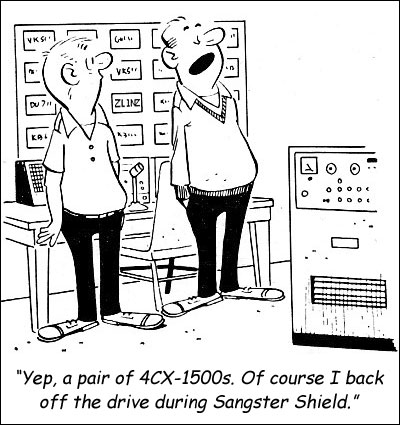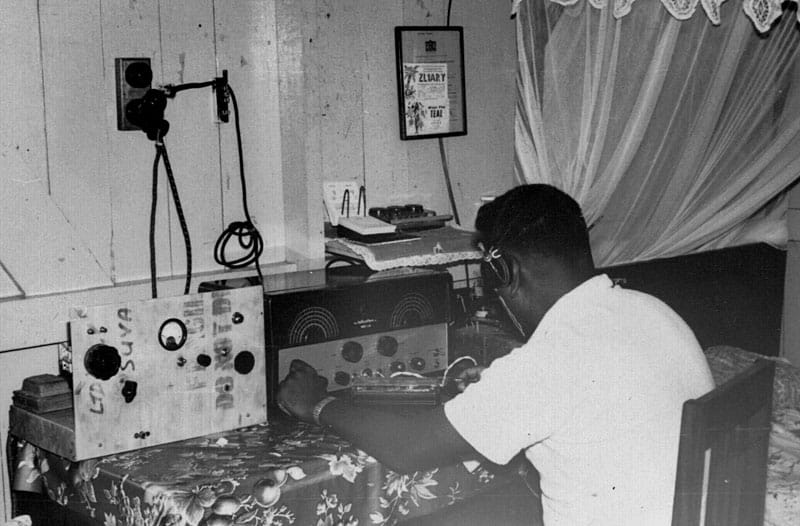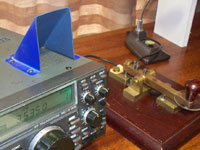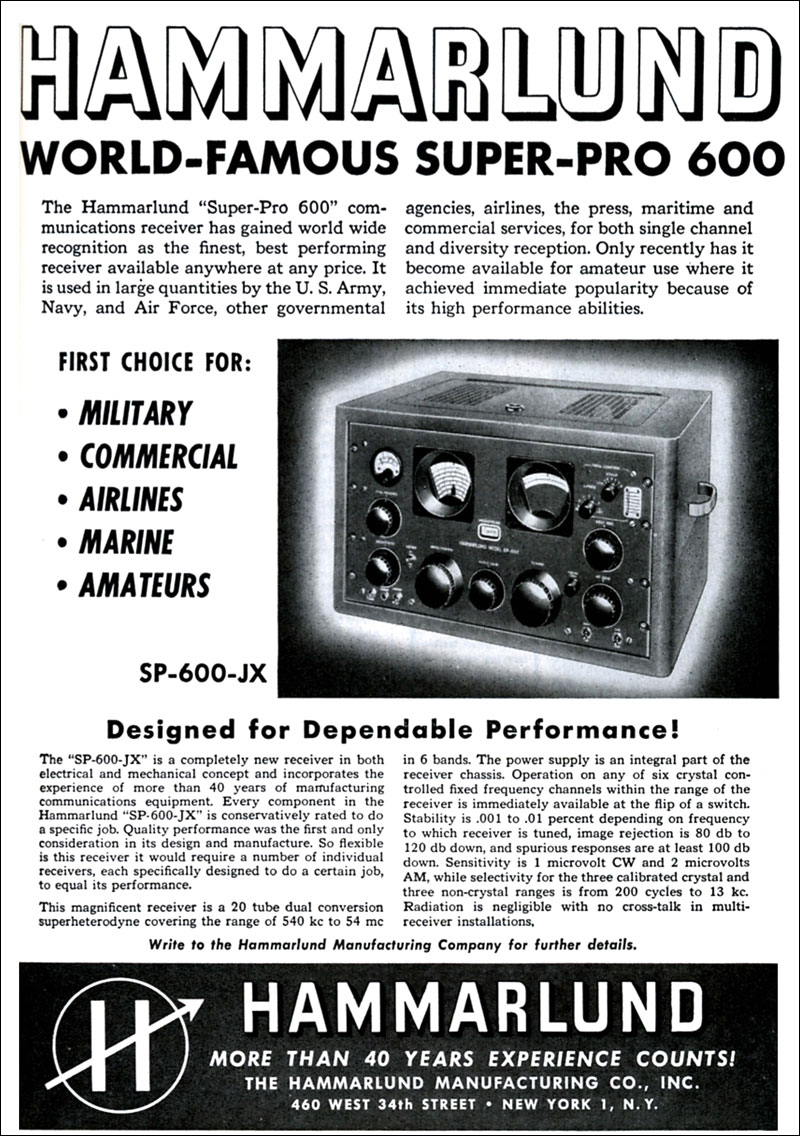This is a fortnightly newsletter about the New Zealand Net. If you would like to be notified by email when a new edition is published, please contact ZL1NZ.
Browse our Newsletter Archive and List of Net Tips.
Featured key

A GPO key with cheese-head terminals. Photo: G4BSW
David ZL2WT completes his report on the three unlabeled morse keys in the Western Bay Museum, pictured in NZ Net News 59.
The final key, in the middle of the museum’s photograph, is a standard British Post Office key. These were made by a wide variety of manufacturers, mostly in Britain. This is referred to as a single current key. Dennis Groacher has technical details of this key in his book A History of the GPO Mark 1, 2 and 3 Morse Telegraph Keys.
 This style of key was used extensively by the New Zealand Post Office, probably from the 1870s to 1963. Keys made in the 19th century had raised milled head terminals, as in the New Zealand version pictured here from the collection of Bruce Mai in Auckland.
This style of key was used extensively by the New Zealand Post Office, probably from the 1870s to 1963. Keys made in the 19th century had raised milled head terminals, as in the New Zealand version pictured here from the collection of Bruce Mai in Auckland.
Those in the early 20th century had capstan type terminals and post WW1 all keys had cheese-head terminals, as in the top photo. (I forget the exact dates.) As keys would be refurbished fairly regularly, any older style terminals would be replaced by cheese-head terminals during refurbishment, so the type of terminal does not always indicate the age of the key.
* If you have an interesting key for this feature, please send me a nice clear photo and a few words describing it.
Quick notes
 The Sangster Shield QRP contest results feature quite a few NZ Net stations. Congratulations to Grant ZL2GD on his 3rd place finish. Barry ZL2LN, Stephen ZL1ANY, Gerard ZL2GVA and Bruce ZL1BWG also did well, with over 100 contacts each.
The Sangster Shield QRP contest results feature quite a few NZ Net stations. Congratulations to Grant ZL2GD on his 3rd place finish. Barry ZL2LN, Stephen ZL1ANY, Gerard ZL2GVA and Bruce ZL1BWG also did well, with over 100 contacts each.
Neil ZL1NZ and Gerard ZL2GVA participated in the Waitakere Sprints CW Contest on 7 August. I think there were about a dozen stations on, including at least four from Australia.
In an online forum: “The Fists website is down for maintenance for approximately 24 hours. Sorry but there is nothing we can do.”
Another member of the group replied: “Yes, there is. There are rumours regarding HF bands where one could meet instead. Is it only me who feels Fists activity is higher online than on the air?”
So, please get off the computer and get on the air – as soon as you finish reading NZ Net News. 🙂
Wanted: Yaesu CW filter of the XF-8.9HC type (or after-market equivalent). These came in various bandwidths and were used in the FT-101ZD, FT-901/902 and FT-980 (maybe other radios too). Please contact ZL1NZ.
Wanted: Simplex Auto key. Davide IK4DCT is looking for an Australian Simplex Auto bug. If you can help Davide, his email address is available on qrz.com.
Cartoon: Popular Electronics, May 1967
Photo flashback

Raj VR2ER (later 3D2ER, now SK), Suva, Fiji in 1964. The receiver appears to be a general coverage Hallicrafters S85 and the transmitter front panel obviously came from a shipping crate. Not sure whether the key is a coffin bug or a homebrew sideswiper. Raj’s QSL card, promoting TEAL airline, is stuck in the licence frame on the wall and above it is a QSL from Ramon Chandler ZL1ARY (SK). Raj was a radio operator at Suva Radio 3DP and Ramon (who appears in the video below) was an operator at Auckland Radio ZLD. Photo: Raj Singh collection, courtesy 3D2AG
In NZ Net News 61 Photo flashback, I asked if anyone could identify the paper-tape keyer mounted above the AR-88 receiver. Jim ZL1ARW made enquires at the Manukau Radio Club, and says he was informed by Bill ZL1ASD that it was a Boehme keyer. I have not been able to find any photos on the web of a similar Boehme unit, so I’m still keen to learn more about it if you have any information.
Morse musings: SOS

Photo: Australian Dept of Defence
I’m sure all NZ Net stations will recognise di-di-di-dah-dah-dah-di-di-dit as the Morse distress signal, which we represent visually as <SOS>.
One of the interesting attributes of the “SOS” form is that is is an ambigram. As an article I found online explains:
“Not only is SOS a palindrome (a word that reads the same backward and forwards, like civic, deified, etc.) it’s also an ambigram, a word that looks identical whether read upside-down or right-side-up. When carved into a snowbank, say, or spelled out in boulders on a beach, SOS still looks like SOS no matter which way the rescue chopper approaches.”
Restoration challenge accepted

1936 Mac bugs. Photos (L-R): ZL1NZ, IK4EWX
Pictured above are two 1936 Mac keys, designed by champion telegraphist Ted McElroy. I am slightly embarrassed to admit that the one on the left is mine – much loved but never once cleaned in the 50 years I’ve owned it!
The one on the right belongs to Gian (Ian) IK4EWX, and he has recently restored it. Didn’t he do a wonderful job? I am so inspired that I think I will finally start working on mine, and Ian has kindly given me advice on how to do it. I’ll give you an update in a future NZ Net News, but if my key turns out half as nice as Ian’s, I will be very pleased. I might even inflict my bug fist on the Net. 🙂
Video: ZL1ZLD reactivates 512 kHz
This TV news report, from 13 March 2010, shows the first transmission from ZL1ZLD (Musick Point, Auckland) on 512 kHz, which had been a working frequency of Auckland Radio ZLD until the station closed in 1993.
Although ZL1ZLD no longer has special authorisation to use 600 metres, the station is active on the 630m amateur band, typically transmitting on 475 kHz, using a former Auckland Radio transmitter and a Marconi-T aerial.
As so often happens when the media report on amateur radio, there are some errors in the script.
Originating message traffic
The NZ Net has three main functions, and there are probably several more, yet to be discovered.
One of these three functions is traffic handling. Some ops aren’t interested in that – which is fine, of course, and we still want you to check in to the Net!
If, on the other hand, you would like to do some traffic handling, but find it hard to get started, the following article could be helpful. It was written by David Fell W3TN, and appeared in QST more than 60 years ago, under the headline: Originating message traffic: Some ideas on traffic sources.

QST magazine, Dec 1958
Part 2, including some great suggestions for messages, will be in the next NZ Net News.
NZ Net quiz: What am I?
Can you identify the item attached to this lovely Vibroplex Lightning bug and explain its purpose in this situation? I’ll give you a clue after the photos.

Photos: K7IOL
Clue: It’s from the USA.
Please send me your answers to the two questions via radiogram.
= = =
 In our previous newsletter, I asked if you could identify the item shown here.
In our previous newsletter, I asked if you could identify the item shown here.
Gerard ZL2GVA had part of the answer, which he sent by radiogram on the NZ Net. Gerard explained that the photo showed an SDR on an SDR. Huh? Well, the item on top of the IC-7300 SDR transceiver was indeed a Sound Directional Reflector, perched atop the transceiver’s built-in speaker.
The item is a common 50mm PVC DWV pipe elbow, available at any hardware or plumbing supplier. In this application, it not only directs the sound towards the operator, it also accentuates a specific frequency due to the inherent resonance of the object. We had a similar object in NZ Net News 47.
Steve AA5TB, who provided the photo, said: “When using the internal speaker, this works great, especially for CW. I use a SCH 40, 2″, PVC elbow. It peaks in response at about 730 Hz.”
 Stan ZL3TK commented: “AA5TB has repurposed standard plumbing hardware to pipe audio from the up-facing speaker in his ICOM IC-7300, towards the operator. However, he’s Johnny-come-lately with this innovation. The photograph shows my elderly ICOM IC-735 sporting a hand-folded audio horn fashioned out of the go-to material for just about any home brewing, the ubiquitous ice-cream container. That blue plastic horn has been providing assistance to my aging tympanic membranes for over five years.”
Stan ZL3TK commented: “AA5TB has repurposed standard plumbing hardware to pipe audio from the up-facing speaker in his ICOM IC-7300, towards the operator. However, he’s Johnny-come-lately with this innovation. The photograph shows my elderly ICOM IC-735 sporting a hand-folded audio horn fashioned out of the go-to material for just about any home brewing, the ubiquitous ice-cream container. That blue plastic horn has been providing assistance to my aging tympanic membranes for over five years.”
Net tip: QNJ
One of the very useful Q Signals is QNJ, which should be used like this:
- QNJ? – Can you copy me?
- QNJ [callsign]? – Can you copy [callsign]?
As a reply, we could send “C” (“yes”) or “N” (“no”) or QNJ (“Yes, I can copy you”) but it would be far better to send a more informative reply, with a signal report, as in:
QNJ? RSN 596
Advertising archive

QST Magazine, September 1952
Suggestions?
If you have suggestions on how to make the NZ Net better, or things you’d like to see covered in these updates, please contact ZL1NZ. You might even like to write something for the newsletter.
Thanks for reading, and I hope to see you soon on the NZ Net!
—
Neil Sanderson ZL1NZ, Net Manager
New Zealand Net (NZ NET)
3535.0 kHz at 9pm NZT Mon-Fri




